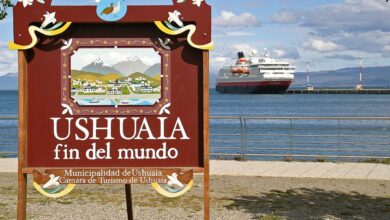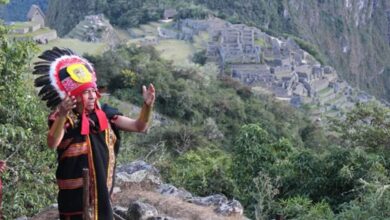Chile Wrestles Surging Antarctic Tourism Worries

From ship decks to icy trails, tourism in Antarctica is booming, surpassing 125,000 annual visitors. Now, experts warn that a patchwork of voluntary guidelines and uncoordinated oversight threatens to derail one of Earth’s last pristine frontiers.
A Boom in Antarctic Visits
Tour operators reported well over 125,000 travelers descending on the White Continent this past austral summer—more than double the total just five years ago. Enthusiastic explorers from around the globe flocked to experience wildlife-rich shore excursions and mesmerizing polar landscapes. Yet, according to conversations with EFE, conservationists worry that each new arrival increases the risk of contamination, invasive species introduction, and disturbance to fragile bird and marine mammal populations.
“Tourism has exploded, but we lack an integrated framework,” said Claire Christian, director of the nonprofit Antarctic and Southern Ocean Coalition (ASOC). While dozens of resolutions on Antarctic tourism exist under the 1961 Antarctic Treaty, these guidelines remain mostly voluntary. Different countries that ratified the Treaty may adopt them through national laws, or sometimes not at all. “If we want to keep calling this a valid activity,” Christian told EFE, “we need to ensure far stricter binding regulation across the board.”
The onus currently falls on local agencies to approve environmental reviews, while operators often voluntarily join the International Association of Antarctica Tour Operators (IAATO). Although IAATO enforces higher standards—like capping vessels to 500 passengers for shore landings—the ultimate control at remote sites hinges on the good faith of each operator. “All of us watch each other,” explained guide Santiago Imberti in Punta Arenas, a southern Chilean gateway to Antarctica. “There’s no official ‘tourism police.’”
Mixed Motives and Environmental Risks
Many expeditions embrace the motto “You cannot protect what you do not know,” encouraging reflective, educational travel. Shipboard staff typically highlight polar ecology, hoping to stir environmental awareness among paying guests. “We aim to deliver a unique, consciousness-raising experience,” Edgardo Vega, director of Fundación Antártica 21, told EFE. He believes such outings foster a sense of global stewardship: “We hold ourselves to high sustainability standards.”
Despite good intentions, research confirms that intensifying travel on the continent disturbs wildlife behavior, speeds glacial melting, and raises the odds of harmful species introductions. Some critics note that, as market competition grows, a few operators might “bend or press the rules” to satisfy traveler demands for close-up thrills. Polar kayaks or scenic helicopter flights offer potent experiences but can also magnify the region’s vulnerability.
Another layer of complexity arises because climate change—driven largely by global carbon emissions beyond Antarctica—compounds these local pressures. “Even if we shut down all tourist visits tomorrow, the ice would continue retreating due to external factors,” Vega admitted. Limiting foot traffic and maritime pollution is important to reduce immediate harm in fragile zones.
Toward Comprehensive Regulation
In 2023, Antarctic Treaty members agreed to combine resolutions into a binding set of rules. It was overarching. However, as the University of Chile’s Antarctic Studies researcher Chantal Lazen told EFE, any final framework must reconcile the region’s patchwork of legal traditions and varied diplomatic interests. “It’s an enormous challenge,” Lazen said, “to craft consensus among states with very different systems and priorities.”
Christian from ASOC hopes for swift action: “They assumed this responsibility when joining the Treaty. Sure, it’s tough, but tourism is among the key impacts on Antarctica’s ecosystem.” She sees the current negotiations as a chance to transform decades of scattered guidelines into one coherent blueprint. In parallel, scientists emphasize an evidence-based approach. Many polar researchers already partner with expedition ships, leveraging onboard labs or instruments to monitor wildlife and climate changes. Those data could inform new tourism rules, including passenger cars, site rotation, or mandatory equipment disinfection.
For now, Antarctic tourism remains largely “self-policed.” Operators push sustainability marketing to reassure eco-conscious travelers. Keen enthusiasts shell out big sums for the once-in-a-lifetime journey, stepping onto windblown shores to watch penguins or witness calving icebergs. “It’s a mesmerizing place that can spark transformation,” insisted Vega. At the same time, watchers caution that too much foot traffic might undermine the very mystique fueling such passion.
Also Read: Brazil Blocks Colgate Toothpaste Product as Alarming Consumer Reactions Emerge
Ultimately, the broader polar community recognizes that forging a truly enforceable regulatory regime demands united political will. The extraordinary ecosystem that enthralls millions of daydreamers worldwide cannot endure open-ended expansion of tourism. And as these negotiations unfold, each new cruise or scientific expedition reveals fresh environmental warnings. “We must find a balance,” Lazen concluded. “We want the world to appreciate this icy wonder, but not to love it to death.”





